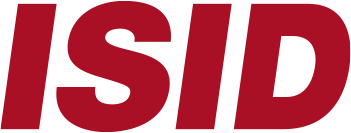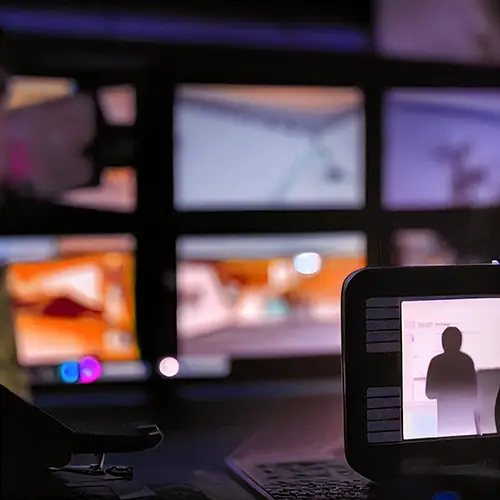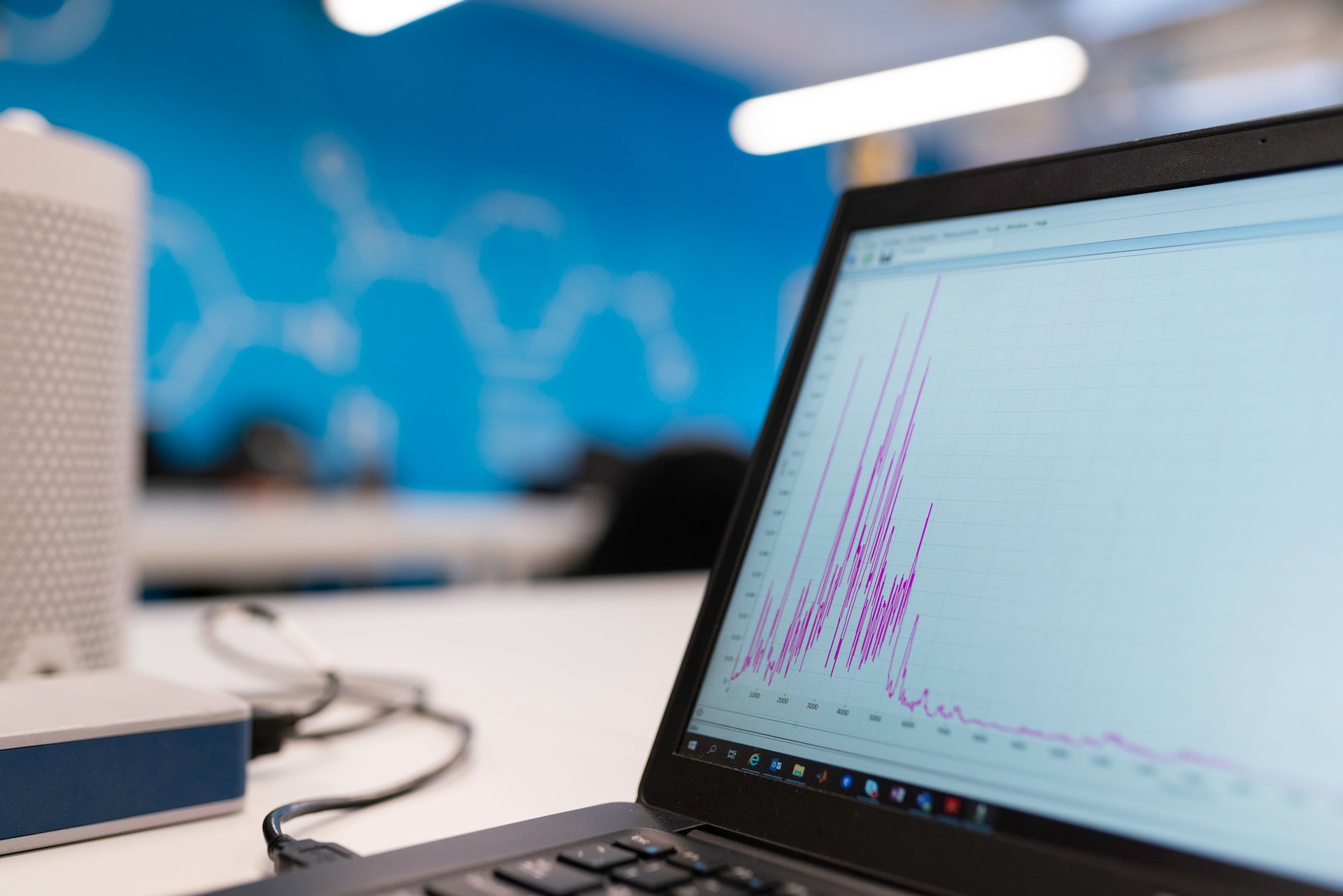AVer Europe and ISID form a strategic partnership to revolutionize video content management solutions
AVer Information Europe B.V. a leading provider of cutting-edge video conferencing and collaboration solutions, has entered into a strategic partnership with ISID, a global innovator in audio and video processing technologies. Together they aim to redefine video content management solutions tailored to the legal, government and enterprise sectors.
ISID specializes in the development of advanced solutions for processing, analyzing, managing and storing audio and video content different sectors. Its flagship product, Videoma Archivo, an enterprise multimedia content management system (EVCM), is instrumental in facilitating the efficient management of video content in organizations such as courts, tribunals, municipalities and companies where these services are essential.
AVer Europe is aware of the increasing demand for high quality video recordings in court and government proceedings, so its state-of-the-art cameras, such as the PTZ310UV2 and CAM520PRO3, are essential for capturing the sharp images needed for archiving.
“Our collaboration with ISID signifies a strategic alignment to address the unique needs of the legal, government and corporate sectors,” stated Jose Rincon, Head of Product Management at AVer Europe. By integrating ISID’s expertise in video content management with AVer’s industry-leading cameras, we equip organizations with robust solutions for efficient video recording and management.”
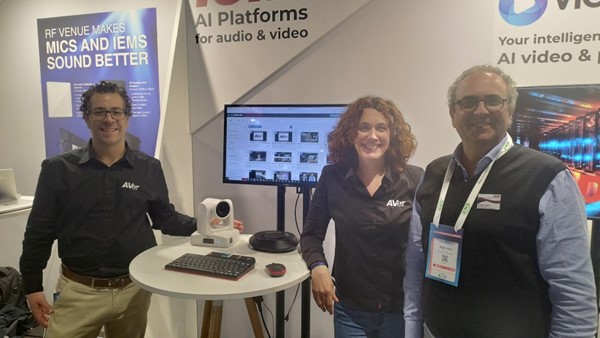
The main advantages of using AVer Europe cameras together with ISID’s Videoma Archive include:
- High-definition video capture ensures clarity and accuracy in court proceedings, government meetings and corporate events.
- Seamless integration with Videoma Archive to streamline content management and archiving, ensuring compliance with regulatory requirements.
- Increased efficiency and reliability in multimedia asset management across multiple industries.
“The strategic partnership between AVer Europe and ISID marks an important milestone in the industry by combining the technological excellence of both companies,” said Angel Lopez of ISID.
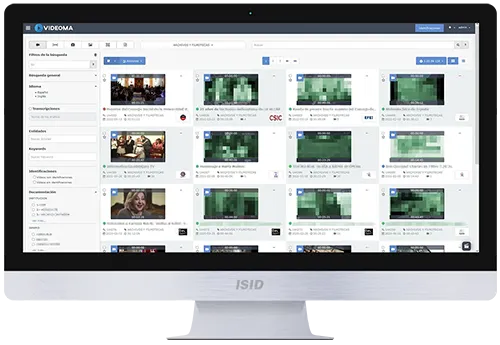
“This collaboration represents a perfect blend of AVer’s expertise in state-of-the-art cameras and ISID’s ability to deliver advanced multimedia content management solutions. Together, we are committed to providing tailored solutions that drive efficiency and customer satisfaction in the legal, government and corporate sectors.”
The collaboration between AVer Europe and ISID underscores the shared commitment to innovation, quality and customer satisfaction in delivering tailored solutions.
For more information on how the AVer Europe and ISID partnership enhances video content management solutions, please visit.
About AVer Europe:
AVer Europe is a leading provider of video conferencing and collaboration solutions offering a wide range of products and services designed to improve communication and productivity in a variety of industries.
About ISID:
ISID is a global company that develops solutions for the processing, analysis, management and storage of audio and video, whether archived, streaming or live (TV). Its solutions integrate advanced AI modules and are used in multiple sectors, such as security, government and public administration, media agencies, education, healthcare and the legal field.
How to manage a vast image archive?
Many companies have an immense image archives of pictures that have been piling up for the past years on some storage system o, even worse, several of them. The time has come to convert this simple stored files into a company asset that you can use for almost any purpose, be it marketing, internal training, documentation, or whatever. You just need the right tool for it…
Where is your image archive?
The rise of digital photography and the easy with that pictures are taken nowadays has resulted in enormous image archives both in your private life, and in your work life. Every company, nowadays, has hundreds or thousands of digital photos lying around on hard disks or other storage media. Product presentations, events, R&D pictures…digital images are taken everywhere.
And many companies do not realize that they represent a really valuable asset that can be used and exploited. But for that you need to consolidate the different image storage locations in one place and use some kind of digital asset management (DAM) software, so you can tag the images appropriately and retrieve them whenever you need.
Collecting and storing pictures is not the same as being able to find what you need in the pool of images. With a DAM you can do exactly that. And the process is easier than you may think.

Deduplication

One important thing when archiving your photo collection is considering the space it takes up. Or, more to the point: the space it takes up unnecessarily. For example, by having multiples copies of the same picture, which is really redundant and not necessary. But how come there are multiple copies in the first place? Well, there can be a number of reasons. First of all, when different people look for images on the web, they may find the same one, and store it. Or image collections are managed by several people and become duplicated. Or individual files are copied to another place and then reunited with the original copies. The result is that in any picture collection there are duplicates.
So before archiving the whole thing, it is a good practice to do some cleaning, in the form of deduplication. There any number of utilities that do this and help you delete the excess copies of the same files. They even detect images that are different sizes, mirrored, cropped, etc. After a good deduplication, your collection is ready to be analyzed and catalogued properly.
Organizing by AI
Traditionally, sorting a picture collection is a tremendous amount of work. You have to look at the images, write down what they contain and add the metadata either to the EXIF field or to external metadata files (like XMP) if the original file format does not support EXIF. This is fine for 25 images, maybe 100, but not several thousand. Hence some help is needed.
And it comes in the form of AI, as many other things nowadays. Modern media archiving solutions, like our own Videoma Archive, use AI analyzers to open the images and “look” at them, identifying everything they contain. It can find faces, places, objects, and make general descriptions of the image content, like “trees, street, houses, bench, people” which is very much appreciated when archiving a picture collection. All of this information is stored as metadata together with the image and can be edited or completed by hand if necessary. That way, you can organize and tag your picture collection automatically in 24/7 and only change what you need, when you need it. Usually, over 90% of the info is added correctly by the system, so you don’t need to spend much time revising the keywords and tags. And, if you want to, it can also unify the picture formats into a specific one (usually JPG) but always keeping the original linked, for when you need it.

A powerful search is always needed

Once you have your picture collection indexed, you are ready to put it to good use in the company. And for that, you need a powerful search engine. Because not finding that picture of last year’s product presentation is equivalent to not having that picture at all. So you need a really powerful search engine, once you have all your images organized, to find them again and repurpose them.
In the case of Videoma, as the system tags everything, you can have potentially dozens of keywords for each picture describing its content. With the help of a search and filters you can find exactly what you need, if it is present somewhere in your collection. And them export it easily, either in the original format or converted to a generic one like JPG.
Use the cloud
We live in the era of cloud. There is no doubt about it. And this means that your picture collection is a good candidate to end up online, simplifying access from anywhere, by any device. But that is not the only advantage. You also get geographic redundancy in the storage systems, automatic backups, and a secure access, which is always nice to have, especially when you put your image collection online, so non-authorized people cannot access it.
Therefore, having your images in the cloud is always a win-win situation and allows easy access from other branches of the same company or organization, even if in other countries.

Conclusion
Ours is a visual world. Most of the storytelling you can see on the web has a big visual factor in it. Pictures are everywhere. That’s why you need to organize and manage your company’s image assets in order to make them retrievable for anyone to get some value out of them. If you put your DAM (Digital Asset Management) in the cloud, you get some additional nice-to-have features, like universal secure access, and unlimited scalability. That, together with a powerful search engine, can provide you with the means to monetize your image collection properly. Or, at least, make it really useful for the company.
Unleashing the Power of Media Monitoring Software
In the fast-paced and interconnected world of media, staying informed and in control of your narrative is paramount. This comprehensive guide aims to unravel the intricacies of media monitoring software, shedding light on its transformative capabilities and illustrating how it can empower goverments and businesses to navigate the dynamic landscape of media with precision and insight.
Understanding the Essence of Media Monitoring Software:
Media monitoring software serves as a sophisticated tool designed to track, analyze, and interpret various media sources in real-time. Both radio and TV, this software provides a centralized hub for collecting, processing, and deriving meaningful insights from diverse media channels.


Key Features of Media Monitoring Software:
- Real-Time Tracking: Media monitoring software excels in real-time tracking, ensuring that users receive immediate updates on mentions, trends, and discussions related to their brand, product, or industry.
- Diverse Source Integration: A robust media monitoring tool aggregates information from a variety of sources, offering a holistic view of online and offline media landscapes. This includes traditional news outlets, social media platforms, blogs, and more.
- Sentiment Analysis: Sophisticated sentiment analysis capabilities allow users to gauge public sentiment surrounding their brand or topics of interest. This insight is invaluable for reputation management and strategic decision-making.
- Competitor Benchmarking: Media monitoring software enables users to keep a finger on the pulse of their industry by tracking competitors. Analyzing competitor strategies and market trends helps in refining one’s own approach.
- Customized Alerts: Tailored alerts and notifications ensure that users are promptly informed about significant developments, allowing for immediate responses to emerging situations.
The Impact of Media Monitoring on Reputation:
- Proactive Crisis Management: Media monitoring software provides the tools necessary for proactive crisis management. By monitoring political figures in real time, goverments can respond swiftly, mitigating the impact.
- Strategic Decision-Making: Armed with comprehensive insights, businesses can make informed, data-driven decisions. Media monitoring guides strategic planning by providing a deep understanding of market trends, consumer preferences, and industry developments.
- Positive Brand Reinforcement: Harnessing the positive sentiment identified through media monitoring allows businesses to reinforce their brand narrative. By amplifying positive mentions and engaging with satisfied customers, companies can strengthen their brand image.

How to Choose the Right Media Monitoring Software:

- Scalability and Flexibility: Opt for a media monitoring tool that can scale with your business and adapt to evolving needs. Flexibility in data sources and customization options ensures relevance over time.
- User-Friendly Interface: A user-friendly interface is crucial for effective utilization. Look for software that offers intuitive navigation and clear visualizations to make the most of the insights provided.
- Analytics and Reporting: Robust analytics and reporting features are essential. The ability to generate detailed reports and analyze trends empowers users to derive actionable insights from the vast array of data.
- Integration Capabilities: Consider the integration capabilities of the software with other tools and platforms. Seamless integration enhances workflow efficiency and ensures that media monitoring is a cohesive part of broader strategies.
Conclusion: Maximizing Potential through Media Monitoring Software:
In conclusion, media monitoring has a pivotal role in shaping narratives, managing reputations, and making informed decisions in today’s media-driven landscape. By unleashing the power of media monitoring software as VIDEOMA MONITOR, individuals and businesses can not only stay ahead of the curve but also proactively shape their presence in the dynamic world of media. Embrace the insights, navigate the trends, and empower your brand with the transformative capabilities of media monitoring software.
Real-Time Insights for Political Personalities: The Power of Media Monitoring Software
In the ever-evolving landscape of politics, staying ahead of the curve is not just advantageous – it’s essential. This article delves into the transformative power of media monitoring software for political personalities, emphasizing how real-time insights can shape strategies, enhance communication, and ultimately influence public perception.
Understanding the Dynamic Nature of Political Monitoring:
Politics is a realm where situations can change in the blink of an eye. Whether it’s breaking news, emerging controversies, or shifting public sentiment, political figures need to be proactive in their approach to navigate the complexities of the landscape.
The Crucial Role of Real-Time Monitoring:
- News Articles Tracking: Media monitoring software allows political personalities to track news articles in real-time, providing a comprehensive overview of how their actions and policies are being covered by the media.
- Social Media Surveillance: In an era where social media is a powerful influencer, monitoring platforms in real-time is imperative. Media monitoring software aggregates social media data, offering insights into trending topics, public sentiment, and reactions to political events.
- Tracking Competitor Strategies: Real-time insights extend beyond individual political figures. Media monitoring software enables the tracking of competitor strategies, helping political personalities understand how their peers are responding to similar situations.

Harnessing Facial Recognition in Media Monitoring for Political Personalities:
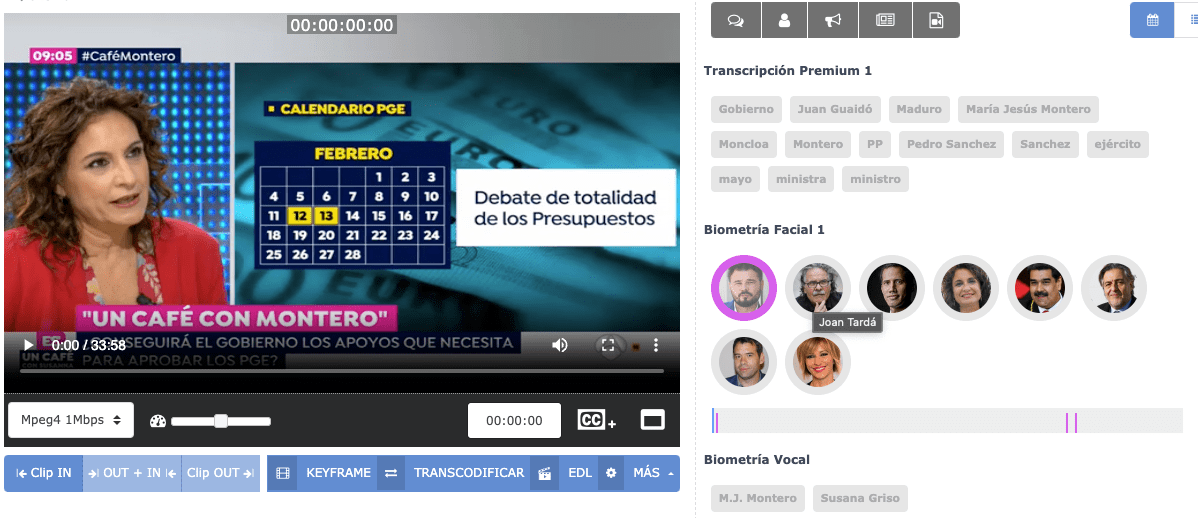
In the realm of media monitoring software tailored for political personalities, facial recognition technology stands as a formidable tool for garnering real-time insights. Through sophisticated algorithms, facial recognition enables the identification and analysis of individuals appearing in media content, ranging from televised appearances to online videos and social media posts. This technology allows political figures and their teams to track their visibility, and assess the effectiveness of their communication strategies with unparalleled accuracy. By harnessing the power of facial recognition within media monitoring software, political personalities gain invaluable insights into their media presence, enabling them to make informed decisions and adapt their messaging strategies in real-time.
Strategic Decision-Making with Real-Time Data:
- Immediate Crisis Response: Political crises demand swift and informed responses. Real-time insights from media monitoring software empower political figures to address crises promptly, minimizing the potential impact on their public image.
- Adapting Communication Strategies: As situations unfold, real-time data allows for the adaptation of communication strategies. Political personalities can tailor their messages based on current narratives and public sentiment.
- Optimizing Campaigns: For those engaged in political campaigns, real-time monitoring is invaluable. Adjusting campaign strategies based on immediate feedback ensures a more responsive and effective outreach.

Conclusion: Empowering Political Figures with Media Monitoring:
In conclusion, the power of real-time insights offered by media monitoring software such as VIDEOMA MONITOR cannot be overstated in the world of politics. For political figures aiming to navigate the complexities of the landscape and maintain a positive public image, the ability to monitor, analyze, and respond in real-time is a strategic imperative. As technology continues to advance, the integration of real-time media monitoring tools will play an increasingly pivotal role in shaping the success and influence of political personalities on the public stage.
Demystifying Video Management Systems: A Comprehensive Guide
In the ever-evolving landscape of digital technologies, video management systems (VMS) have emerged as essential tools for businesses seeking to optimize their video content and surveillance operations. This comprehensive guide aims to demystify VMS by providing an in-depth overview of what they are, their features, and how businesses can benefit from implementing them. Additionally, we’ll explore the integration with AI Video Technologies to enchance funcionalities and efficiency.
Understanding Video Management Systems (VMS):
At its core, a video management system is a software platform designed to manage, store, and analyze video footage from surveillance cameras or other sources. VMS provides users with centralized access to video content, allowing for easy monitoring, retrieval, and playback of recorded footage. This centralized approach streamlines video management processes, improves security, and enhances situational awareness.

Key Features of Video Management Systems:

- Centralized Video Storage: VMS consolidates video footage into a centralized repository, eliminating the need for disparate storage solutions and facilitating easy access to archived content.
- Live Monitoring and Playback: Users can monitor live video feeds in real-time and playback recorded footage as needed, providing comprehensive oversight of surveillance operations.
- Remote Accessibility: Many VMS solutions offer remote access capabilities, allowing users to view video footage from any location with an internet connection, enhancing flexibility and convenience.
- Advanced Analytics: Some VMS platforms incorporate advanced analytics capabilities, such as motion detection, object tracking, and facial recognition, enabling proactive security measures and actionable insights.
- Integration with Other Systems: VMS can integrate with other security systems, such as access control and alarm systems, to provide a comprehensive security solution.
Benefits of Implementing Video Management Systems:
- Improved Security: By providing centralized access to video footage and advanced analytics capabilities, VMS enhances security by enabling proactive threat detection and rapid response to security incidents.
- Enhanced Efficiency: VMS streamlines video management processes, reducing the time and resources required to monitor, retrieve, and analyze video footage, thus improving operational efficiency.
- Increased Productivity: With remote access capabilities, users can monitor surveillance operations from any location, allowing for greater flexibility and productivity.
- Cost Savings: By consolidating video storage and streamlining operations, VMS can lead to cost savings associated with reduced hardware and maintenance expenses
Integration of OCR, Subtitling, and ALPR:
- OCR (Optical Character Recognition): Integrating OCR technology within VMS enables the automatic extraction of text from video footage, allowing for easy indexing, searching, and retrieval of relevant information.
- Subtitling: VMS can incorporate subtitling features to enhance accessibility and comprehension of video content, particularly in multi-language environments or for individuals with hearing impairments.
- ALPR (Automatic License Plate Recognition): ALPR technology integrated within VMS enables automatic identification and tracking of license plates, enhancing security and enabling applications such as parking management and law enforcement.

Conclusion:
In conclusion, video management systems as VIDEOMA ARCHIVE play a vital role in modern business operations, providing centralized access to video content, enhancing security, and improving operational efficiency. By understanding the features and benefits of VMS, businesses can make informed decisions about implementing these systems to meet their specific needs. Additionally, the integration of OCR, subtitling, and ALPR within VMS further enhances functionality and efficiency, making them indispensable tools for businesses in various industries.
Crisis Management in Politics: A Deep Dive into Media Monitoring for Political Personalities
In the world of politics, where public perception can change in an instant, effective crisis management is paramount for political personalities. This article explores the critical role of media monitoring software in the realm of politics, providing a comprehensive understanding of how these tools enable swift responses and strategic decision-making during challenging times.
Understanding the Complexity of Political Crises:
Political figures often find themselves navigating through a myriad of challenges, ranging from unexpected controversies to rapidly evolving situations that have the potential to profoundly impact their public image and credibility. In the face of such tumultuous circumstances, the implementation of a well-executed crisis management strategy becomes paramount. Such strategies serve as a crucial lifeline, allowing political personalities to effectively address issues, provide transparency, and ultimately safeguard public trust amidst periods of uncertainty and scrutiny.

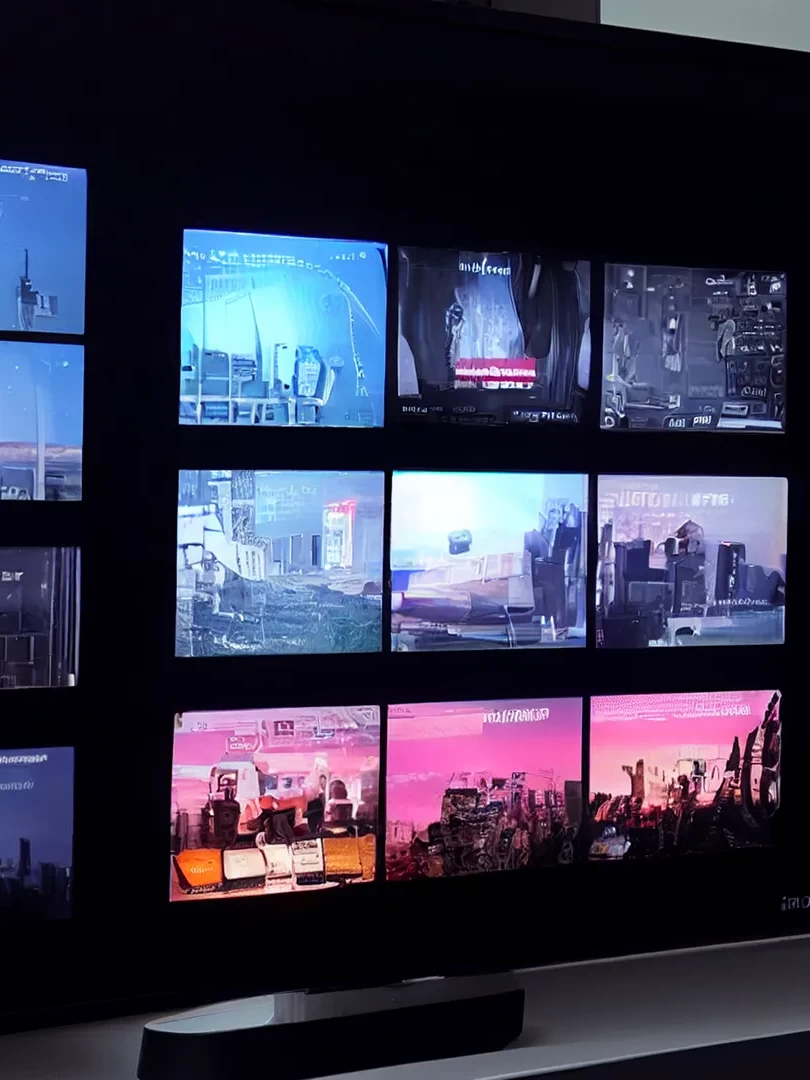
The Swift and Informed Response with Media Monitoring Software:
- Real-Time Monitoring: Media monitoring software provides real-time tracking of news articles, social media, and online discussions. This allows political personalities and their teams to stay informed about breaking news and emerging narratives that could affect their reputation.
- Sentiment Analysis: Through sentiment analysis, media monitoring tools can gauge the public’s mood and perception during a crisis. Understanding sentiment helps political figures tailor their responses to address concerns and manage the narrative effectively.
- Identification of Key Issues: Media monitoring software identifies key issues and talking points within the crisis. This insight enables political personalities to prioritize their messaging and focus on addressing the most critical aspects of the situation. An AI tecnology as wordspotting, is helpful.
- Competitor Analysis: In the midst of a crisis, knowing how competitors or opposing figures are responding is crucial. Media monitoring tools allow for comprehensive competitor analysis, ensuring that responses are aligned with the broader political landscape
Proactive Crisis Management Strategies:
- Early Warning System: Media monitoring serves as an early warning system, enabling political personalities to detect potential crises before they escalate. Timely intervention can prevent the amplification of negative narratives.
- Strategic Messaging: Armed with real-time data and sentiment analysis, political figures can craft strategic messages that resonate with the public. This proactive approach helps shape the narrative and steer the conversation in a more favorable direction.
Looking Ahead: The Future of Crisis Management in Politics:
Discuss the evolving landscape of crisis management in politics and how advancements in media monitoring technology, such as artificial intelligence with facial recognition and wordspotting, are shaping more sophisticated and proactive strategies.

Conclusion: Empowering Political Figures in Times of Crisis with Media Monitoring Software
In conclusion, media monitoring software serves as an invaluable tool for political personalities facing crises. The ability to monitor, analyze, and respond in real-time allows political figures to navigate challenging situations with agility and precision, ultimately safeguarding their public image and maintaining trust in the political arena. As the political landscape continues to evolve, the integration of advanced media monitoring tools becomes increasingly indispensable for effective crisis management, tools such as VIDEOMA MONITOR are pivotal.
Streamlining Operations: How Video Content Management Boosts Efficiency
In the digital age, where visual content plays a pivotal role in business operations, the effective management of video content has become a strategic necessity. This article explores the role of video content management systems and how they contribute to operational efficiency, providing insights into streamlining workflows, enhancing collaboration, and optimizing the utilization of video assets.
Understanding Video Content Management Systems (VCMS):
Video Content Management Systems (VCM) are robust platforms designed to organize, store, and facilitate the seamless retrieval and sharing of video content. As businesses increasingly rely on video for communication, marketing, training, and surveillance, the implementation of a VCM system becomes instrumental in handling the growing volume of visual assets.

Key Aspects of Video Content Management:

- Centralized Storage: VCM consolidates video content into a centralized repository, eliminating the chaos of scattered files and facilitating easy access for authorized users.
- Metadata Tagging: Implementing metadata tagging within a VCM system enhances searchability and categorization, allowing users to quickly locate specific video assets based on keywords, dates, or other relevant criteria.
- User Permissions and Access Control: VCM systems provide granular control over user permissions, ensuring that sensitive or restricted content is accessed only by authorized personnel. This is crucial for maintaining data security and compliance.
- Collaboration Features: Businesses benefit from enhanced collaboration through features such as version control, comments, and annotations within a VCM system. This streamlines the review and approval processes for video projects.
- Adaptability to Various Formats: A robust VCM system supports a wide range of video formats, accommodating the diverse needs of different departments within an organization.
Optimizing Operational Efficiency with VCM:
- Efficient Workflows: By centralizing video assets and streamlining access, VCM systems significantly reduce the time employees spend searching for, downloading, or uploading video content. This results in more efficient workflows and increased productivity.
- Enhanced Collaboration: Teams can collaborate seamlessly on video projects with the help of a VCM system, providing a unified platform for sharing ideas, providing feedback, and ensuring that everyone is working with the latest version of the content.
- Cost Savings: VCM systems contribute to cost savings by eliminating the need for excessive storage space, reducing redundancy in video creation, and optimizing the utilization of existing video assets.
- Quick Access for Decision-Making: In scenarios where quick access to specific video content is crucial, a well-implemented VCM system ensures that decision-makers can swiftly retrieve the necessary information, aiding in timely and informed decision-making.


The Future of Video Content Management:
As the demand for video content continues to grow, the future of Video Content Management is expected to witness further advancements. Integration with artificial intelligence for automated tagging, improved video analytics as closed caption, OCR and facial biometry, are anticipated to be key areas of development.
Conclusion: Empowering Business Efficiency through Video Content Management Systems
In conclusion, adopting a Video Content Management System is not merely an operational choice; it’s a strategic investment in business efficiency. Organizations that prioritize the effective management of their video assets through VCM systems gain a competitive edge in the modern business landscape.
Invest in a VCM system as VIDEOMA ARCHIVE that aligns with your business goals, enhances collaboration, and streamlines operations. As the digital era continues to evolve, leveraging the power of video content management becomes imperative for organizations seeking to thrive in a visually driven world.
AI Analytics conquers healthcare
The introduction of AI in the healthcare sector has been going on for some years now. But recently it has taken on another dimension, with the advances in artificial intelligence and the capabilities that Machine Learning has proven to have for the medical profession. Advances in diagnostics, treatments and patient monitoring are helping to establish AI as a driving force for modern healthcare.
Better diagnostics & research
Doctors all over the world have to do the same task over and over again: observe the patient’s symptoms, have a look at the possible tests and use their experience and knowledge to find a diagnostic that fits it all, in order to decide on a treatment. But what if there was a quicker way to find a diagnostic, with more information, beyond the knowledge of the MD?
Image diagnostics with AI
Today, when most of the medical imaging is done digitally it was only logical that someone would come up with the idea of having AI analyze the images to make a diagnostic. Especially when an AI can have access to hundreds or thousands of images to compare them and draw conclusions.
Machine Learning, with access to large amounts of clinical documentation, can do what machines are good at: identify patterns and, possibly, make predictions about treatment outcomes or the evolution of the patient’s illness or recovery. This is not only an advantage for the Medical Doctors, but for the whole health sector, as AI could select the best treatment right from the start and save money or time.
Even if the radiologist (or similar) would have to check on the proposed diagnostic and treatment and give his approval, this simplifies the process and saves time. Especially if the AI is right. And, if it’s not, it will learn from the error for the next time.
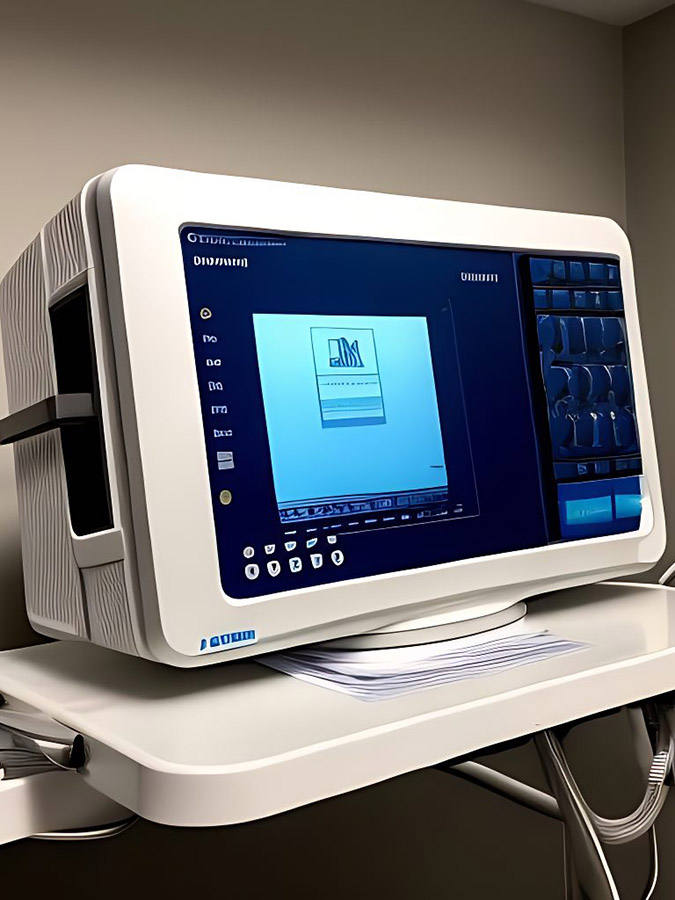
A smarter HIS

One of the main problems currently is that the different medical images reside in different systems or machines all over the hospital and the patient information usually is in the HIS (Hospital Information System). This difficults the analysis of all the available images, as they are not connected.
Many hospitals use a PACS (Picture Archiving and Communication System) but that presents another set of difficulties, like visualizing video recorded during explorations, MRIs, TACs or ultrasounds, which in many cases is not possible.
Our solution, Videoma Health bridges this gap and allows to integrate not only the PACS with all the medical imaging systems, of any provider, but to connect to the HIS/RIS to get all the patient information associated and, on top, provide the possibility of not only seeing recorded images, but also reproducing video, in any format or codec.
An enhanced Electronic Health Record
Almost all civilized countries use some form or other of an EHR (Electronic Health Record) for all of the patients. This database of information has an incredible value not only for a single patient, as the AI system can access all of his/her historical data to take into account for the current diagnostic, but if the access is global, the conclusions to be drawn for patients with similar symptoms or medical history is invaluable.
Of course, this may collide with privacy laws in many countries, but the benefits are clear. And even if the information is limited to the same hospital, many conclusions could be drawn regarding treatment successes, duration, and the like. In the end, the AI system would be able to make better recommendations to save more patients, shorten treatments or even find new ways of confronting a certain illness.
Impact on healthcare jobs
Obviously, every time when artificial intelligence or robots enter someone’s profession at first there is certain reluctance and mistrust. Humans don’t like to be displaced from their job. But, in this day and age, AI is entering most of the professions due to its capability of learning and of correlating really big data sets in very little time to arrive to conclusions. The overall short-term predictions is that AI in the health sector is not going necessarily to replace people, but be an additional tool that will help them make better diagnostics than before.
On the other hand, humans are not ready yet to trust their health to a machine, even if it is a very intelligent one. This, if it ever is going to happen, will take a good amount of time. However, having a “second opinion” from a machine that has analyzed hundreds or thousands of cases similar to the one at hand will be invaluable to define the most optimal treatment in many cases. And, as people become accustomed to this and the hit rate climbs, so will trust. So health care workers should not feel immediately threatened, but instead see AI as a new tool to use in their profession to do a better and, maybe, quicker job.

Conclusion
Artificial Intelligence and Machine Learning are taking a foothold in the medical and healthcare professions, to help make diagnostics, control treatments and, in general, give a second opinion based on hundreds or thousands of previous and similar data points, to reach the best conclusions, diagnostics and treatments.
Transform your video archive into effective training videos
Almost every company of a certain size has a ton of video lying around, from the most varied sources. And almost every company has the need to train personnel, to familiarize them with internal processes and the way of doing things in that particular company. So why not combine these two elements to make training videos with the material you already have?
A “dark video archive” is not useful
As we said in the intro, in many companies there are hundreds or thousands of videos scattered all over the different storage systems or hard disks. All of this footage comes from the most diverse sources, like presentations, advertising, internal demos, product showcases or client demos. It exists in a variety of formats and, in most cases, each department has its own small pool of video files.
But this is not effective, because there is no clear way to find a certain video, when you need it. This is why we call this a “dark video archive”. No one knows exactly what is in it, until someone opens and watches the videos.
But this also isn’t effective. And there are three main reasons for it:
- Time required. Watching tens of hours of video in order to find a segment we know exists somewhere is not efficient. And watching hundreds of hours is just not feasible.
- Scattered files. As we already said, usually there is no central repository of video. So if you need a certain material you may have to talk to different people, in different departments, to find out what they have and where it is. And this takes time.
- Ephemeral results. Also, after you finish your project, the results you have obtained vanish again. The next time someone needs to find something similar to what you were looking for, he or she has to start from the beginning. All over again.

An EVCM is the solution

In order to get a complete view of all the available files, you need something akin to a database, but for video. This is called an EVCM (Enterprise Video Content Management). These systems, like our own Videoma Archive, allow you to have the complete control over all the video assets, even if they reside on different systems, devices or even locations. As long as there is a network connection, you can import them all to the EVCM. And if new videos are added to the supervised locations, they are imported automatically, without your intervention, so the database is always up to date.
But this is not all. Thanks to its AI modules Videoma can analyze the imported videos in 24/7 and extract all the metadata you need, in order to make the video content completely searchable. How exactly? Well that depends on your needs. First of all, you have to define what you need from the video. The available options are facial recognition, speech-to-text, speaker id, translation, object recognition, among others.
This means that you can have, for example, a complete transcript from a product presentation and search for a specific word or phrase. Even in the presentations from the last five years. And the platform will return immediately all the videos or audio that contain the phrase, taking you directly to the time point where it was said, with a simple click.
Build your training videos in record time
Once you have all the videos under control and the ability to search through them, the task of building your own training videos has become much easier. If you know what you want to include in the training video, you only need to search for the material in all of your new formed repository. Videoma will locate all the clips that match your search and allow you to export them with just a couple of clicks.
Once you have the base material is it just a case of stitching it together, in order to build your training unit. In fact, you can return this montage to Videoma so it will be analyzed and indexed. This way, all the employees looking to learn a specific topic do not need to watch the whole video, but can skip directly to the point where it is explained. Again, a huge time saver.
Conclusion
Don’t let video material pile up in your company’s storage, but put it to work importing it into an EVCM so it can be searched by its contents with ease, and reused. In this use case the main goal is to build training video from all the material already available in the company, but there are, obviously, many more uses for an EVCM we will see in future articles.
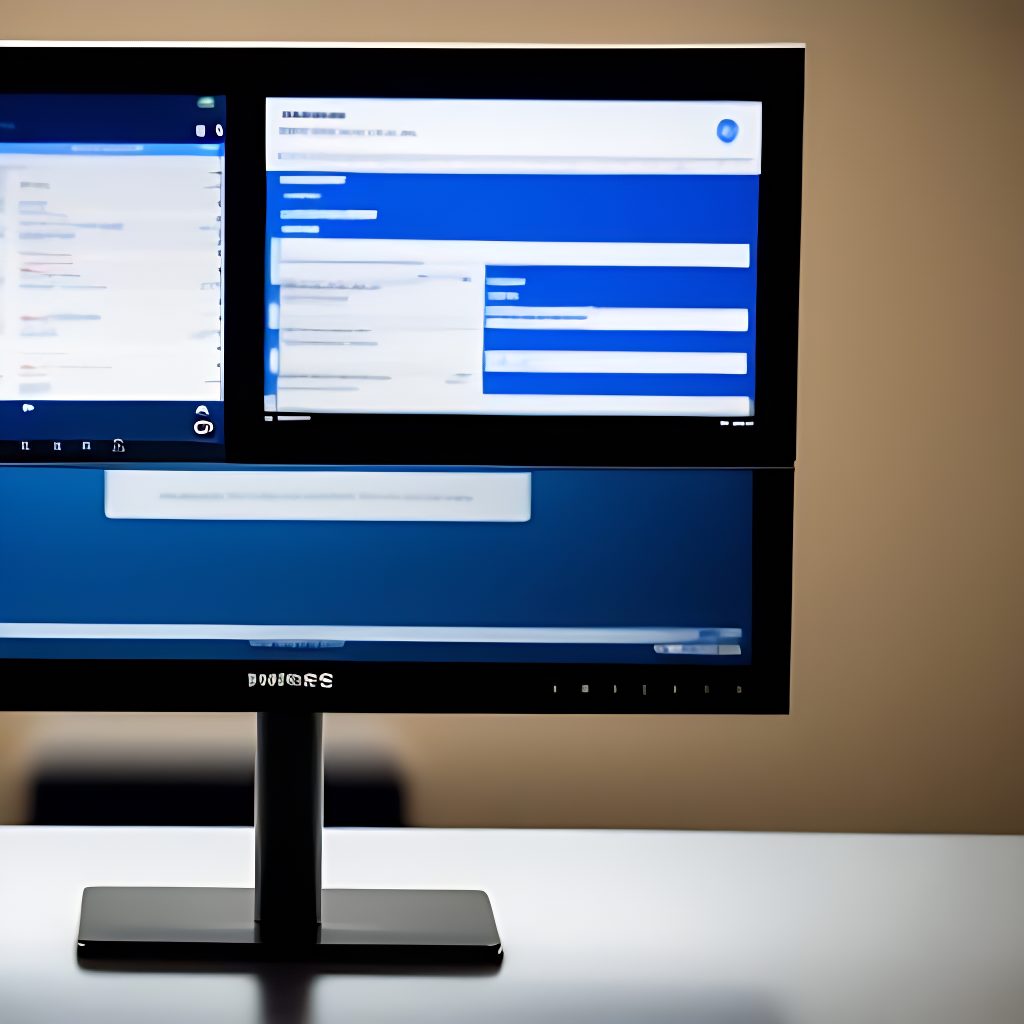
Convert your corporate video archive into a company asset
For a couple of decades now the business world has understood that their digital files contain information and thus are a valuable asset to be exploited. Text documents, spreadsheets, PDF files, databases…all of these are obvious. But what about video? Any company nowadays has a sizeable amount of videos available somewhere on a storage device. Why not convert them into assets as well? It turns out that, thanks to AI, this is now as easy as pie. Don’t let that happen. Just convert your corporate video archive into a company asset with the help of AI.
Video is everywhere
Today it is trivial to record a video. Just whip out your phone, and press “Record”. And what is true for personal use is also true for companies. Tradeshows, events, product demos, product test, research facilities or laboratories…all of them generate video for different purposes. All these files end up either in Marketing, in research or as documentation. But what happens after that? Usually the video files go to into some storage system. And are slowly forgotten.
AI to the rescue
As easy as it is to analyze the contents of a database, a spreadsheet or a text document to gain some insight of the information they contain, as difficult it is to do the same with video or audio files. Fortunately, artificial intelligence has advanced analyzers that can transcribe audio from a video to text (Speech-to-Text) or recognize faces or voices. Or look for specific sound patterns.

Locate, ingest, classify & store
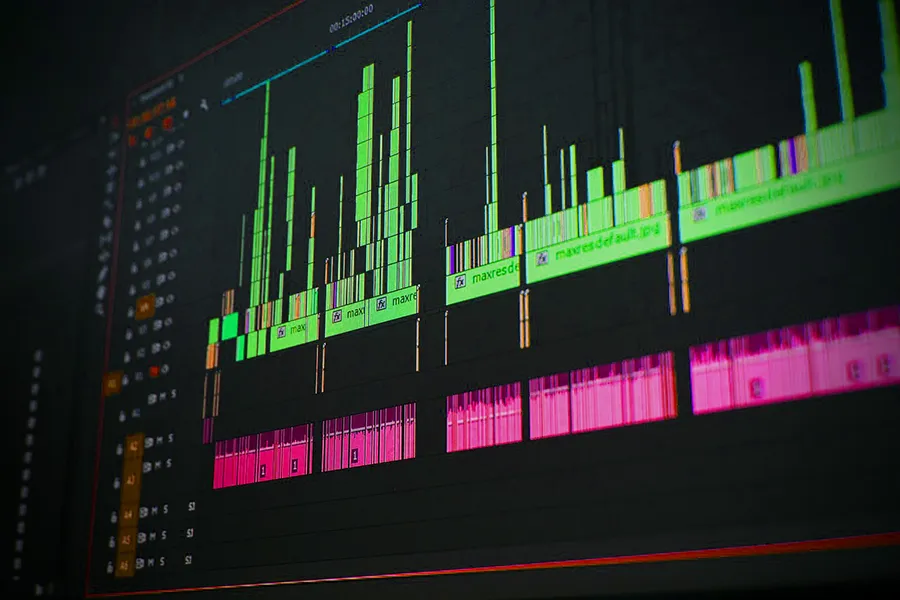
Once you have made the decision to organize your company video archive the best way is to follow some steps that will help you along the process and save you from unnecessary work:
- The first step is to locate all the digital video material you have in the company.
- After that, you have to upload it into your EVCM (like our own Videoma Archive). This process is usually called “ingest”, as the system reads the files, tags and classifies them.
- Next, the classification step is what usually takes the most time. But with Videoma’s analyzers almost all of the tagging is automatic.
- Finally, once everything is analyzed, the video is stored in a database from where is can be retrieved and exported easily.
Reuse and monetize
Once you have everything in an easily searchable EVCM you are ready to monetize these video assets. But how and where? There are four main ways:
- Free to watch with Ads. Most known of these is naturally YouTube. This kind of monetization is based on what is called Advertising Video on Demand or AVOD. For each view and click you get a certain amount. There are other platforms like TikTok, Twitch, DailyMotion, Vimeo and others.
- Subscription services. Depending on the type of your videos you may decide that platforms like Netflix, Hulu or Amazon Prime may be the way to go. These services, usually called Subscription Video on Demand (SVOD) make their users pay a monthly fee, and then they can watch whatever they like.
- Transactional services. In this case, examples are Amazon Prime o YouTube, for example. This type of service is called Transactional Video on Demand (TVOD) and they allow you to rent or buy clips for a certain price. In this category you can also opt for Stock sites like Shutter Stock, iStock, Adobe Stock and others.
- DIY. Put your content to sale or rent on your own website. This requires more work on your part, but you don’t have to pay any fees to the platform that does the selling in the three cases aboveWhich one of the options to choose depends entirely on your material, how you want it to be monetized and what expectations you have for the gains.
Which one of the options to choose depends entirely on your material, how you want it to be monetized and what expectations you have for the gains.
Conclusion
Having hundreds or thousands of video clips sitting somewhere on a harddisk or company storage system is an inefficient way of using a material that could be potentially monetized in different forms. The best way to deal with an extensive company video library is to tag and categorize everything, so you can find what you need in seconds, not weeks. For that, a EVCM like Videoma Archive is an invaluable aid. Once you have everything categorized, you know exactly what you have and think of ways of monetizing or reusing the content to extract all the value that it has.

